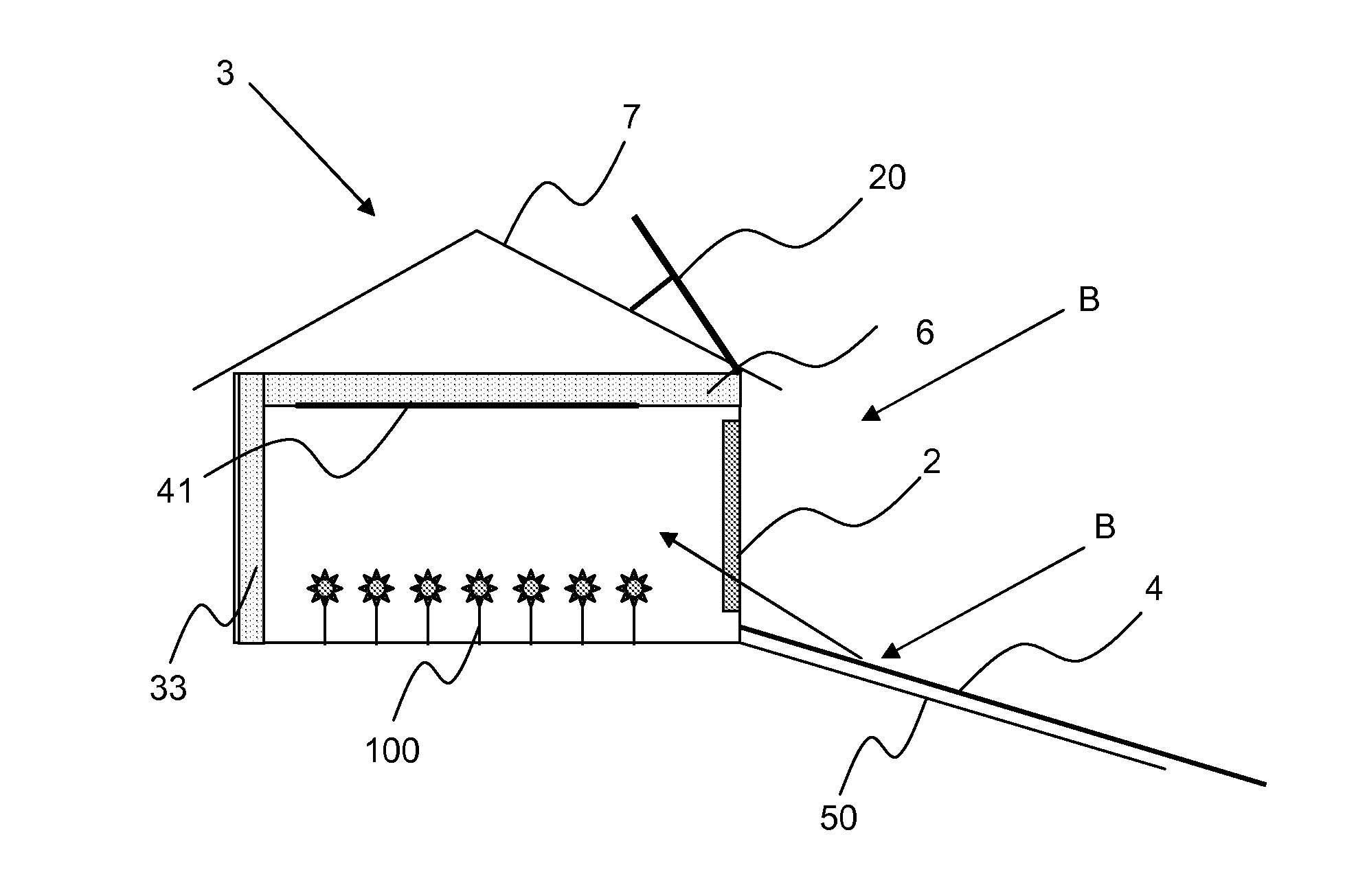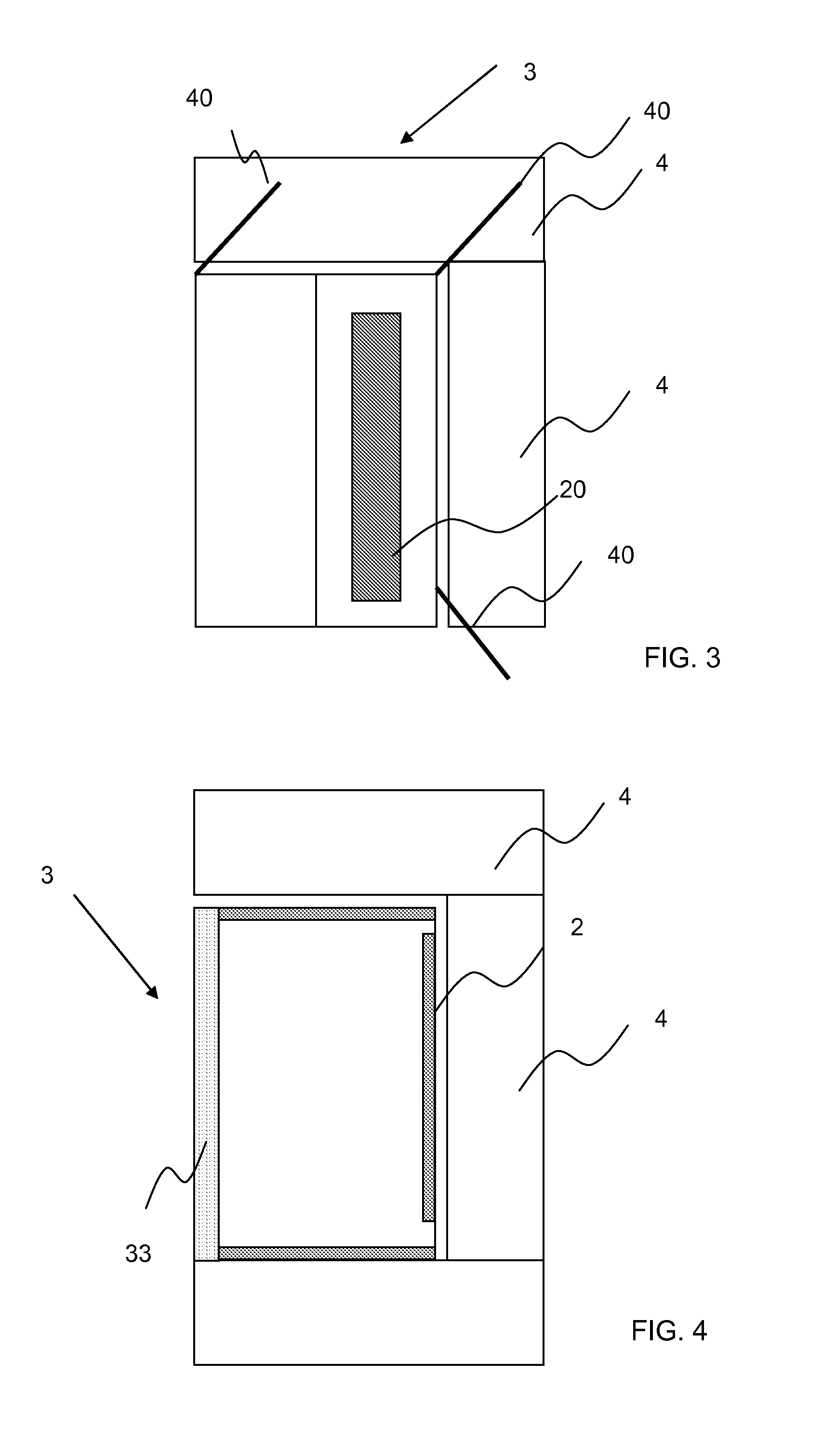Greenhouse
a greenhouse and greenhouse technology, applied in the field of greenhouses, can solve the problems of extremely high energy consumption of greenhouses, poorly suited to our cold conditions, and large expenditure of energy costs, and achieve the effect of saving energy
- Summary
- Abstract
- Description
- Claims
- Application Information
AI Technical Summary
Benefits of technology
Problems solved by technology
Method used
Image
Examples
second embodiment
[0059]FIG. 4 shows a horizontal section of the greenhouse 3. As above, the outside walls of the greenhouse are provided with translucent surfaces 2 and an opaque outside wall portion 33. In this embodiment, the translucent surfaces are placed on three sides of the greenhouse abutting on one another. This enables sunlight to be received into the greenhouse from three geographical directions. Light reflecting surfaces 4 are provided in connection with these translucent surfaces as well.
third embodiment
[0060]FIG. 5 shows the greenhouse 3 as seen from above. Translucent surfaces 2 are placed on three sides of the greenhouse, enabling sunlight B to be received into the greenhouse from three geographical directions. Light reflecting surfaces 4 similar to those described above are provided at the front of these translucent surfaces. The greenhouse further comprises vertically positioned light reflecting surface elements 40. This enables the surface area of the sunlight reflecting surfaces to be increased and, also, light coming from the side to be reflected into the greenhouse more efficiently. The vertically positioned light reflecting surface elements 40 are preferably fastened to the outside wall pivotally such that they may be turned to protrude in different directions from the outside wall. In such a case, the amount of light being reflected inside may always be optimized at different times of the day. During the darkest winter months, the surface elements may be directed at the ...
PUM
 Login to View More
Login to View More Abstract
Description
Claims
Application Information
 Login to View More
Login to View More - R&D
- Intellectual Property
- Life Sciences
- Materials
- Tech Scout
- Unparalleled Data Quality
- Higher Quality Content
- 60% Fewer Hallucinations
Browse by: Latest US Patents, China's latest patents, Technical Efficacy Thesaurus, Application Domain, Technology Topic, Popular Technical Reports.
© 2025 PatSnap. All rights reserved.Legal|Privacy policy|Modern Slavery Act Transparency Statement|Sitemap|About US| Contact US: help@patsnap.com



